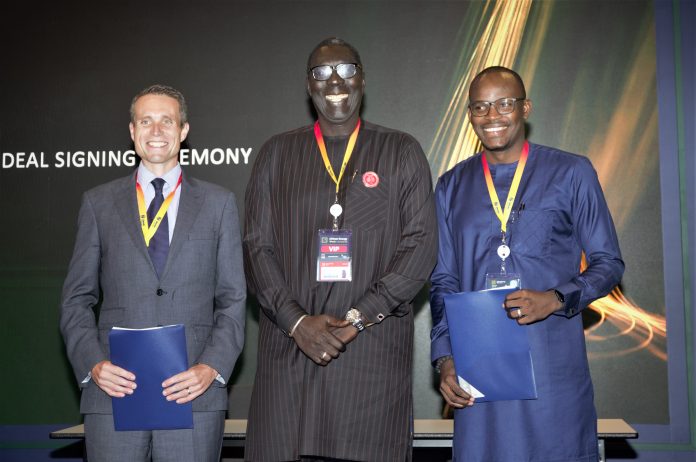The Gambia is currently embarking on a journey to embrace renewable energy, particularly solar and wind power, as well as exploring prospects for green hydrogen production.
Aligned with the vision laid out by its National Development Plan (NDP), the country aims to increase the share of renewable energy in its mix from 2% to 40% by 2025.
Its comprehensive strategy holds the promise of a cleaner and more sustainable energy future, while harmonizing with the shared goal of the MSGBC region to eradicate energy poverty.
The Gambia boasts immense solar power potential, with approximately 3,000 hours of annual sunshine per year and a minimum daily solar production capacity of 4 KWh of solar power radiation per m2.
When it comes to wind power, The Gambia benefits from favorable conditions, with wind speeds ranging from 3.4 meters per second (m/s) to 4.2 m/s at a height of 30 m, particularly in locations like Kanuma and Jambanjelly near the coast, where free winds flow in from the sea. However, the current utilization of renewable resources in the country remains underdeveloped.
According to the International Renewable Energy Agency (IRENA), The Gambia only had 2 MW of installed solar photovoltaic capacity at the close of 2022. Similarly, in the realm of wind energy, only small-scale projects initiated by private investors and non-governmental organizations are currently in operation.
As a result, the government has been proactively pursuing the development of renewable resources, establishing The Gambia Renewable Energy Center that facilitates research and development in the sector and collaboration with various stakeholders.
The West African country has subsequently attracted substantial investments from international lenders, including the European Investment Bank and World Bank.
Through The Gambia Electricity Restoration and Modernization Project, both institutions are financing a 23 MW solar project in Jambur within the West Coast Region, to be constructed by national utility NAWEC.
The project aims to increase installed renewable generation capacity and transmission network efficiency, facilitating increased electricity access and aligning with the NDP and The Gambia Electricity Sector Roadmap.
Meanwhile, the German Federal Ministry of Education and Research is actively engaged in renewable energy development through The Renewable Energy Potentials in The Gambia Project, initiated in 2021, which aims to provide training in renewable energy technologies to over 200 Gambians.
In recent months, The Gambia has also directed its focus to green hydrogen production, driven by ample solar and wind resources, as well as its coastal location that enables easy access to water for electrolysis.
In September 2023, Swiss renewable energy firm NEK Umwelttechnik AG inked a Memorandum of Understanding (MoU) with The Gambian government to develop a 200 MW onshore and 350 MW offshore wind farm, with the potential to fuel future green hydrogen production.
With commissioning anticipated by 2027, the wind projects would represent the first clean, sustainable and domestic source of power for the country.
One month later, the government signed another MoU with H2 Gambia Limited, a subsidiary of the UK-based HydroGenesis Group, at African Energy Week 2023 in Cape Town to further explore the commercial prospects for hydrogen production.
Renewable energy and green hydrogen present a dual solution to The Gambia’s energy deficit.
In addition to low electrification rates, the country faces high electricity tariffs, averaging $0.23 per kWh in 2023.
As a result, new installed renewable capacity could decrease costs to as low as $0.033 per kWh for onshore wind, $0.049 per kWh for utility-scale solar photovoltaic, and $0.081 per kWh for offshore wind, according to IRENA.
Reduced costs will ensure more affordable access for Gambians, especially in rural areas that are well suited to decentralized and off-grid solutions. Meanwhile, surplus power has the potential to be exported to the West African Power Pool, benefiting neighboring MSGBC countries like Guinea-Bissau and Guinea-Conakry.
The Gambia’s green energy revolution, its commercial potential for green hydrogen production and more will be explored at the upcoming MSGBC Oil,Gas & Power 2023 conference and exhibition.
The two-day event will take place in Nouakchott on November 21-22, under the esteemed patronage of Mauritanian President Mohamed Ould Ghazouani and the participation of Abdoulie Jobe, Minister of Petroleum and Energy of the Republic of The Gambia.
Source:Energycapitalpower















